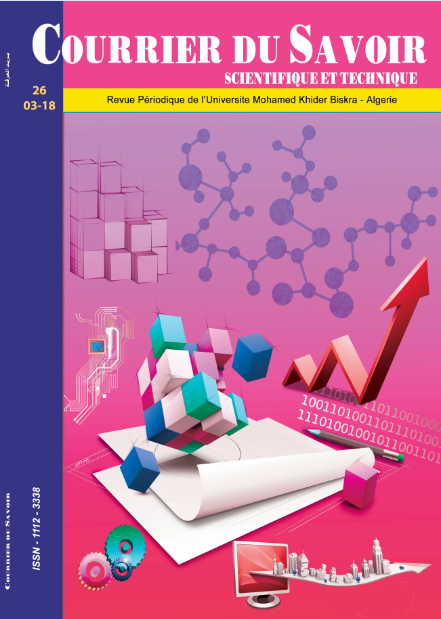DISTRIBUTION AND TREATMENT OF FLUORIDE ANIONS IN DRINKING WATER OF ALGERIAN TOWNS: (BATNA–BISKRA–EL-OUED)
Résumé
In this work, we conducted tests for about 73 samples. We have focused on fluoride anions in the drinking water of Biskra,Batna, and El-Oued Towns. We found that most of the drinking water of Biskra and El_Oued contains excessive concentrations of fluoride (more than 1,5mg/l). In order to reduce the concentration of fluoride, we have used adsorption of fluoride from drinking water samples by activated carbon prepared from: camel bones with a yield between 19,5%-30,5%;cow bones with a yield between 12%-24,2% and Crataegus azarolus nucleus with a yield between 15%-10 %. The former yields were found when the concentration of fluoride increases from 2mg/l to 15 mg/l. We also found that the ideal concentration of activated carbon of the three types is 1g/l; the contact time for the treatment by activated carbon prepared from cow bones is 90minutes. As for the time contact of activated carbon prepared from camel bones and from Crataegus azarolus nucleus, it was more than 75 minutes. For the steering speed, when it increases, the concentration of fluoride decreases. The ideal pH is about 7.The majority of drinking water of the state of Batna contains a low concentration of Fluoride lower than 0.5mg/l. they must compensate this deficiency from Foods like dates and fish.


